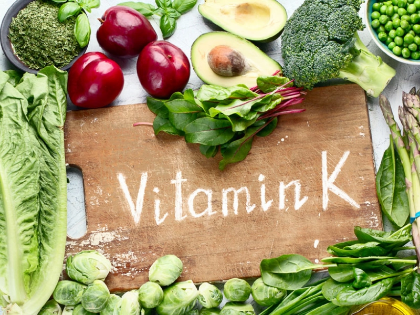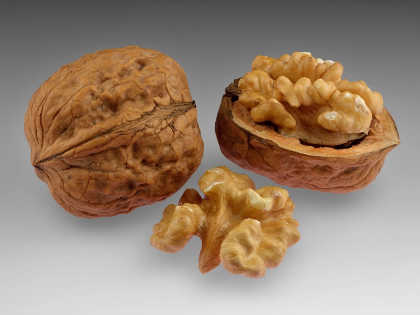How the Grapefruit Can Help Reduce Cholesterol
According to a recent study, eating grapefruit can lower blood cholesterol levels. More specifically, the fruit lowers triglycerides and LDL. In the trial, 28 healthy participants were divided into two groups and given grapefruit or apple juice to drink with their usual balanced meals for three weeks each, followed by three weeks of washout. The red grapefruit juice significantly reduced their triglycerides, LDL cholesterol, and total cholesterol levels, but not the apple juice.
Vitamin C

Calcium
 Potassium, a mineral that aids in blood vessel wall relaxation or elasticity, is present in grapefruit to a fair extent. This can assist in reducing blood pressure, which is an additional heart disease risk factor. Approximately 5% of your daily potassium needs can be met by half a grapefruit.
In comparison to the same amount of apple juice, one study found that eating red or blond grapefruit and drinking grapefruit juice every day for a month decreased total and LDL cholesterol and improved triglycerides. Additionally, it raised blood levels of antioxidants that offer protection.
If you use any medications that interact with grapefruit, such as blood thinners like clopidogrel or pravastatin, or cholesterol-lowering medications like lovastatin, atenolol, simvastatin, and atorvastatin, you should consult your doctor before incorporating grapefruit or grapefruit juice into your diet. Additionally, grapefruit may conflict with antidepressants like paroxetine and fluoxetine. Grapefruit can also cause an increase in blood sugar. Medication dosage adjustments or a decrease in the frequency of grapefruit eating can be used to resolve these problems.
Potassium, a mineral that aids in blood vessel wall relaxation or elasticity, is present in grapefruit to a fair extent. This can assist in reducing blood pressure, which is an additional heart disease risk factor. Approximately 5% of your daily potassium needs can be met by half a grapefruit.
In comparison to the same amount of apple juice, one study found that eating red or blond grapefruit and drinking grapefruit juice every day for a month decreased total and LDL cholesterol and improved triglycerides. Additionally, it raised blood levels of antioxidants that offer protection.
If you use any medications that interact with grapefruit, such as blood thinners like clopidogrel or pravastatin, or cholesterol-lowering medications like lovastatin, atenolol, simvastatin, and atorvastatin, you should consult your doctor before incorporating grapefruit or grapefruit juice into your diet. Additionally, grapefruit may conflict with antidepressants like paroxetine and fluoxetine. Grapefruit can also cause an increase in blood sugar. Medication dosage adjustments or a decrease in the frequency of grapefruit eating can be used to resolve these problems.
Phenols
 Flavonoids are plant chemicals with antioxidant qualities found in grapefruit. These substances can lower your cholesterol while also aiding in the body's defence against inflammation and disease.
The Framingham Offspring Cohort study indicates that there is an inverse relationship between flavan-3-ol intake and CVD. This link was lessened, though, when confounding variables including the consumption of fruits and vegetables were taken into account.
Quercetin, gallocatechin-(4'-O-7)-epigallocatechin, and myricetin-3-glycosides are phenolics found in grapefruit that function as bacteriostatic agents, meaning they stop bacteria from growing in your body. They may also prevent the synthesis of nucleic acids and the consumption of bacterial energy.
Researchers discovered that in healthy persons, consuming 250 ml of grapefruit juice on a daily basis lowers total cholesterol (TC) and low-density lipoprotein (LDL) cholesterol. Conversely, an equivalent volume of apple juice produced no results. Lowering cholesterol levels can also be achieved by reducing saturated fat intake in addition to increasing fruit and vegetable consumption. Restricting items like high-fat meats and dairy goods can help achieve this.
Flavonoids are plant chemicals with antioxidant qualities found in grapefruit. These substances can lower your cholesterol while also aiding in the body's defence against inflammation and disease.
The Framingham Offspring Cohort study indicates that there is an inverse relationship between flavan-3-ol intake and CVD. This link was lessened, though, when confounding variables including the consumption of fruits and vegetables were taken into account.
Quercetin, gallocatechin-(4'-O-7)-epigallocatechin, and myricetin-3-glycosides are phenolics found in grapefruit that function as bacteriostatic agents, meaning they stop bacteria from growing in your body. They may also prevent the synthesis of nucleic acids and the consumption of bacterial energy.
Researchers discovered that in healthy persons, consuming 250 ml of grapefruit juice on a daily basis lowers total cholesterol (TC) and low-density lipoprotein (LDL) cholesterol. Conversely, an equivalent volume of apple juice produced no results. Lowering cholesterol levels can also be achieved by reducing saturated fat intake in addition to increasing fruit and vegetable consumption. Restricting items like high-fat meats and dairy goods can help achieve this.
Carotene
 Red grapefruit contains antioxidant carotenoids (lycopene, b-carotene, and a-carotene), which may help decrease cholesterol. The fruit's vivid red and pink hues are a result of the carotenoids. Among their many antioxidant qualities is the capacity of carotenoids to block the angiotensin converting enzyme (ACE).
In one study, 57 hyperlipidemic individuals receiving statin medicine had their serum cholesterol levels compared to those of red and blond grapefruit juice. For thirty days, the participants were given regular, well-balanced meals along with fresh grapefruit, both blond and red. While both grapefruit and blond grapefruit had comparable ACE inhibitory efficacy, only the red grapefruit showed a significant reduction in LDL-cholesterol and total cholesterol.
The low glycaemic index of grapefruit juice is another reason to include a glass in your diet. Low-glycemic foods are a better option for those with diabetes or other blood-sugar control issues since they digest sugars more slowly than high-glycemic foods.
Red grapefruit contains antioxidant carotenoids (lycopene, b-carotene, and a-carotene), which may help decrease cholesterol. The fruit's vivid red and pink hues are a result of the carotenoids. Among their many antioxidant qualities is the capacity of carotenoids to block the angiotensin converting enzyme (ACE).
In one study, 57 hyperlipidemic individuals receiving statin medicine had their serum cholesterol levels compared to those of red and blond grapefruit juice. For thirty days, the participants were given regular, well-balanced meals along with fresh grapefruit, both blond and red. While both grapefruit and blond grapefruit had comparable ACE inhibitory efficacy, only the red grapefruit showed a significant reduction in LDL-cholesterol and total cholesterol.
The low glycaemic index of grapefruit juice is another reason to include a glass in your diet. Low-glycemic foods are a better option for those with diabetes or other blood-sugar control issues since they digest sugars more slowly than high-glycemic foods.









